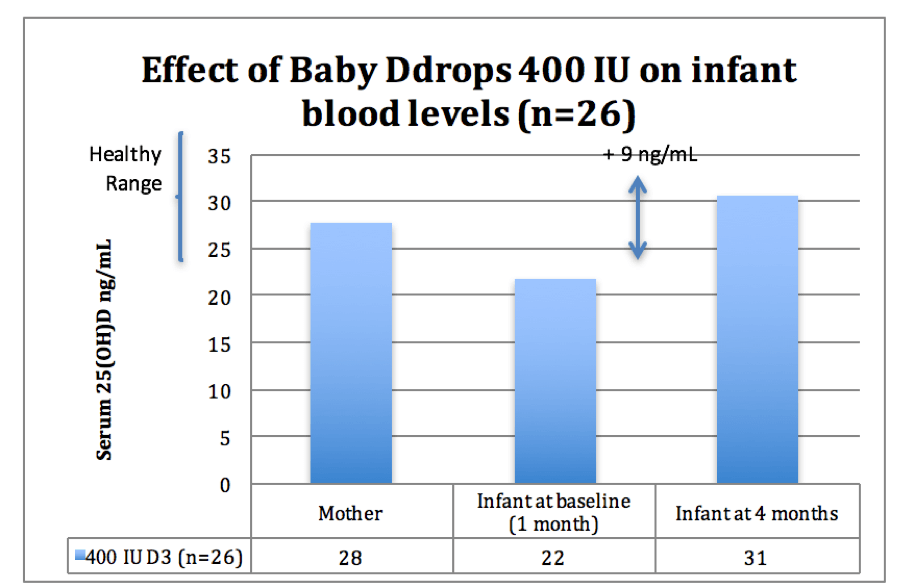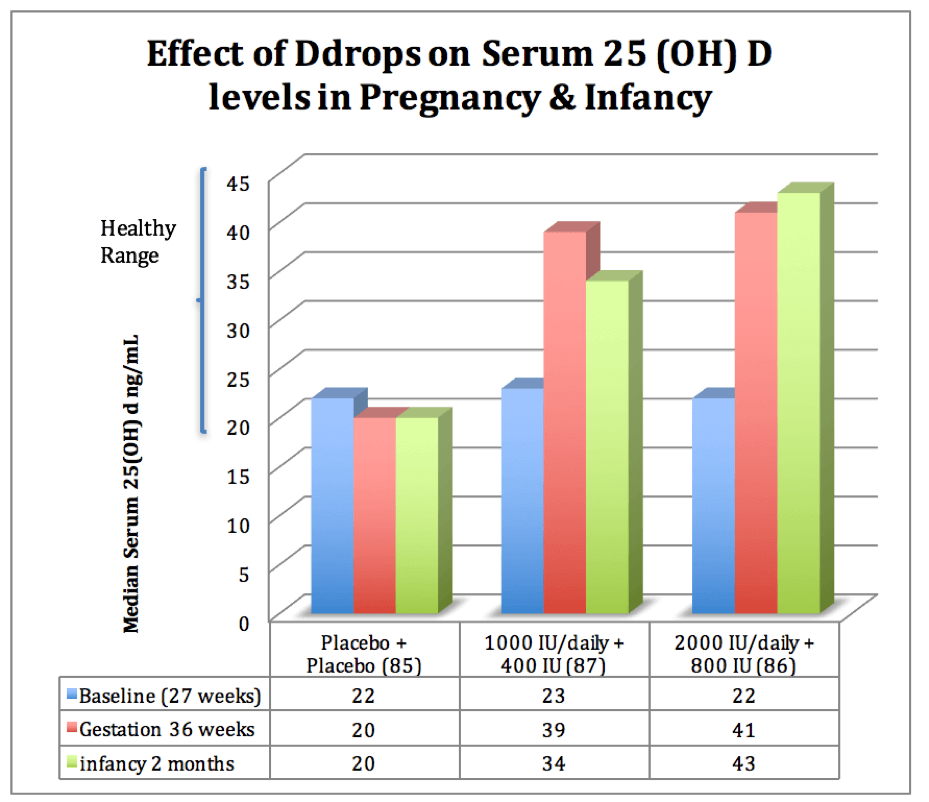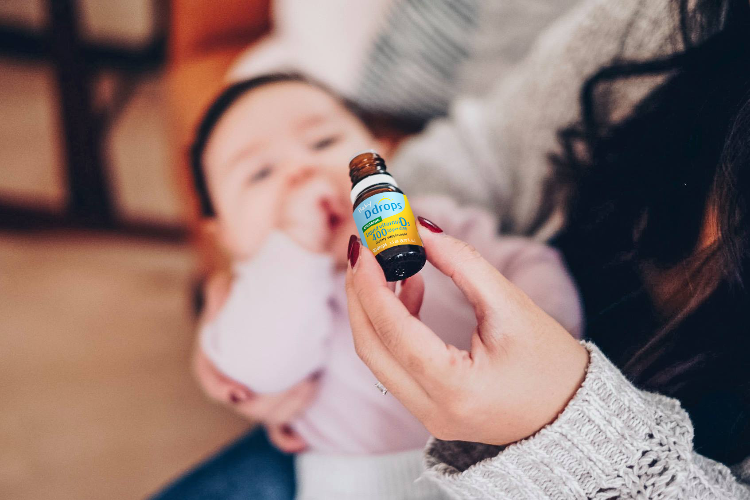13 Mac 2017
Adalah wajib bagi jenama vitamin D untuk menyatakan dos vitamin D (contohnya 400 IU) pada pembungkusan luar. Tetapi adakah dos harian itu sebenarnya masuk ke dalam aliran darah dan apa yang berlaku kepadanya di dalam badan? Terdapat percubaan rasmi yang mempunyai Ddrops® sebagai ubat kajian. Kami ingin berkongsi keputusan ini daripada percubaan yang diterbitkan:
Percubaan klinikal yang diterbitkan dengan bayi:
- Bayi yang diberi susu ibu yang sihat yang mengambil 400 IU dos harian Baby Ddrops® selama 3 bulan mengalami peningkatan purata 9 ng/mL atau 22 nmol/L dalam serum 25-OH vitamin D paras[1]
 Diadaptasi daripada Gallo et. al.
Diadaptasi daripada Gallo et. al.
Percubaan klinikal yang diterbitkan dengan kehamilan dan bayi:
- Bayi diberi 400 IU–800 IU / hari mencapai 82 hingga 89 peratus tahap vitamin D sasaran; wanita hamil yang mengambil 1000 IU – 2000 IU / hari mencapai 89 hingga 91 peratus tahap sasaran vitamin D [2]
- Penyelidik menyimpulkan bahawa berkemungkinan memberi tambahan kepada kedua-dua ibu semasa mengandung dan bayi apabila mereka dilahirkan diperlukan untuk mencapai sasaran paras darah vitamin D.
 Diadaptasi daripada Grant et. al.
Diadaptasi daripada Grant et. al.
Mengapakah keputusan ini penting?
Sangat sedikit jenama vitamin telah menerbitkan data yang menunjukkan keberkesanan. Malah lebih sedikit produk mempunyai data daripada kajian yang dijalankan oleh pakar pihak ketiga dan diterbitkan dalam jurnal ulasan rakan sebaya. Ia menjadi sangat sukar untuk mengkaji produk pada bayi dan wanita hamil. Produk Ddrops® telah dibangunkan oleh saintis dan Syarikat Ddrops tidak sabar-sabar untuk membantu memajukan penyelidikan vitamin D. Syarikat Ddrops sering diminta membekalkan vitamin D untuk ujian penyiasatan atas sebab berikut:
- Ddrops® dibuat di Kanada dalam kemudahan berlesen dan berlesen NSF Health Canada – bermakna prosedur dan banyak pemeriksaan kualiti disediakan untuk menegakkan piawaian GMP (Prosedur Pengilangan Baik). Baby Ddrops® juga merupakan produk yang diperakui NSF.
- Syarikat Ddrops boleh mengeluarkan dos khas dan plasebo supaya penyelidik boleh menstruktur kajian menggunakan dos yang berbeza.
- Produk Ddrops® mudah digunakan dan kebanyakan orang dalam kajian boleh mematuhi arahan.
Tuntutan yang dibuat belum dinilai oleh FDA. Produk ini tidak bertujuan untuk mendiagnosis, merawat, menyembuhkan atau mencegah sebarang penyakit mengikut FDA.
[1]Gallo, s et al. Perubahan dalam Plasma 25-Hydroxyvitamin D Tidak Berbeza antara Bayi Yang Disusui Yang Menerima Suplemen Harian Ergocalciferol atau Cholecalciferol selama 3 Bulan. Nutr. 1 Februari 2013 jld. 143 no. 2 148-153 doi: 10.3945/jn.112.167858[2]Grant, C. et al, Vitamin D Semasa Kehamilan dan Bayi dan Kepekatan 25-Hydroxyvitamin D Serum. PEDIATRICS Jilid 133, Nombor 1, Januari 2014




3 ความคิดเห็น
Teknik Telekomunikasi
Scientific Evidence: Examine available scientific research and clinical studies that support or refute the effectiveness of Ddrops in improving vitamin D levels and overall health outcomes.
Greeting : Telkom University
Teknik Informatika
Dosage and Efficacy: Analyze the recommended dosage of Ddrops and assess its ability to provide sufficient vitamin D to meet daily requirements and address potential deficiencies.
Visit us Telkom University
Telkom University
Absorption and Utilization: Discuss how the body absorbs and utilizes vitamin D from liquid supplements compared to other forms, such as capsules or direct sunlight exposure.
Regard Telkom University
ทิ้งข้อความไว้
เว็บไซต์นี้ได้รับการคุ้มครองโดย hCaptcha และมีการนำนโยบายความเป็นส่วนตัวของ hCaptcha และข้อกำหนดในการใช้บริการมาใช้